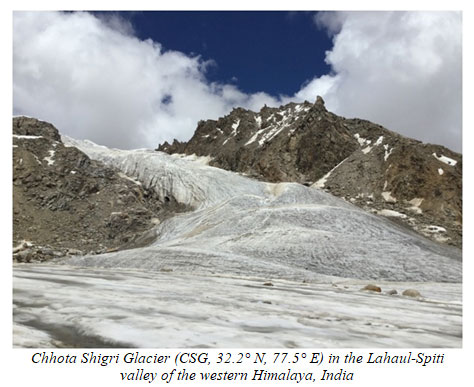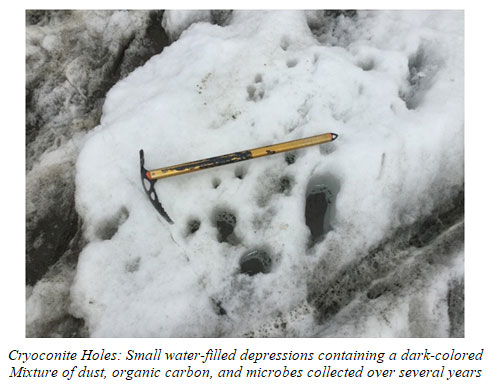
Biomass-derived carbon could be the only primary driver of carbon-induced glacier melting in the western Himalaya—a key finding which can help to conserve the ice mass of the western Himalayan glaciers, said a study carried out by scientists from IIT Kanpur.
The research supported by Department of Science and Technology (DST), Government of India, Climate Change Program (SPLICE) Grant and Science & Engineering Research Board (SERB) showed that the source of organic carbon in the glaciers of Western Himalayas is more from local biomass sources and not from fossil fuel sources. In contrast, glaciers in eastern and central Himalaya are mostly affected by fossil fuel derived organic carbon (OC).
The glaciers in the Himalaya are melting at an increased rate because of the well-established long-term increase of the near-surface temperature, and due to the presence of surface impurities such as dust and organic carbon particles. The impurities darken the ice surface and, as a result, directly increase the heat absorption, resulting in ice melting. Understanding the source, origin, and spatial distribution of dust and carbon in the Himalaya is critical to assess the role of carbon impurities in the Himalayan glacier wastage.
In the study published in the journal of American Chemical Society, Dr. Indra Sen and his team showed that this spatial variability of OC sources is because of regional differences in wind transport pathways and precipitation regimes of the western, central, and eastern Himalaya. Using HYSPLIT air mass trajectory modeling results, they show that the eastern and central Himalayan glaciers draw a significant fraction of their air mass from the heavily polluted Indo-Gangetic Plains. In contrast, air mass trajectory modeling results at the study site shows that the western Himalayan regions receive limited air-mass transport from the polluted Indo-Gangetic Plains and less rainfall when compared to central and eastern Himalaya, confirming the limited transport of ambient anthropogenic pollutants from the IGP.
 The researchers used multiple lines of evidence including state-of-the-art organic and inorganic isotopic tracers and atmospheric modeling in tracing the provenance of glacial surface organic carbon deposited on the ablation zone of Chhota Shigri Glacier (CSG) in the Lahaul-Spiti valley of the western Himalaya.
The researchers used multiple lines of evidence including state-of-the-art organic and inorganic isotopic tracers and atmospheric modeling in tracing the provenance of glacial surface organic carbon deposited on the ablation zone of Chhota Shigri Glacier (CSG) in the Lahaul-Spiti valley of the western Himalaya.Cryoconite, which is small water-filled depressions containing a dark-colored mixture of dust, organic carbon, and microbes collected over several years—and supra-glacial moraine sediments from the CSG surface were investigated to characterize the origin of carbonaceous particles on the surface of Chhota Shigri Glacier. In addition to glacial deposits, atmospheric particulate matter (PM10) were collected in Harsil and Kanpur.
Applying the distribution of OC activation energy, 14C activity and radiogenic isotopes of 208Pb/204Pb, 207Pb/204Pb and 206Pb/204Pb in glacial debris and atmospheric particulate matter (PM10 size fraction) the team showed that up to 98 % of the OC in western Himalayan glaciers are derived from biomass of C3 vegetation and autochthonous photo-autotrophic inputs modified by heterotrophic microbial activity and 2 % petrogenic from sources.
Such a study of source, origin, and spatial distribution of dust and carbon would help better quantify the future impact of increasing anthropogenic emission on Himalayan glaciers, and its attendant impacts on the hydrological regimes of glacier-sourced large rivers such as the Indus, Ganga, and Brahmaputra.
For more details, please contact Dr. Indra S. Sen, isen[at]iitk[dot]ac[dot]in.






























